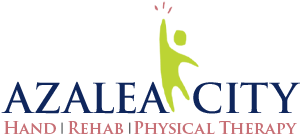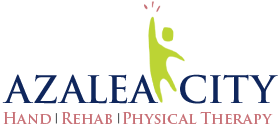Knee Pain Relief In Mobile AL

Knee pain-it's something most of us have felt at some point. Maybe you twisted your knee during a weekend basketball game, or perhaps you noticed an ache after your morning run. But when does regular knee pain in Mobile AL turn into something more concerning, like chronic knee pain? Knowing the difference is crucial to getting the right treatment, and that's where we step in. Let's explore the types of knee pain, what causes them, how they're diagnosed, and how physical therapy/occupational therapy can help you get back to living pain-free.
The Difference Between Knee Pain and Chronic Knee Pain In Mobile AL
Not all knee pain is created equal. Some discomfort may simply be a sign that you pushed yourself a little too hard, while other types of pain may indicate a long-term problem that needs more attention.
- Acute Knee Pain: This type of pain is sudden and often related to a specific injury. Think about a fall, a twist, or a direct impact to the knee. Acute knee pain is usually sharp and immediate, and while it can be intense, it often fades with rest and proper care.
- Chronic Knee Pain: On the flip side, chronic knee pain is persistent. It sticks around for weeks, months, or even years. It's not always linked to a specific injury and can worsen over time. Chronic knee pain might start as a dull ache, but if left untreated, it can become debilitating, making simple tasks like walking, climbing stairs, or even sitting uncomfortable.
What Can Cause Knee Pain in Mobile AL?
The knee is a complex joint, and several factors can contribute to pain. Whether your knee pain is acute or chronic, understanding the underlying causes can help you figure out the best path to relief.
Here are some common culprits behind knee pain:
- Overuse or repetitive stress: Activities like running, jumping, or even standing for long periods can lead to overuse injuries. Conditions like patellar tendinitis (inflammation of the tendon that connects your kneecap to your shin) or runner's knee (pain around the kneecap) are typical examples of overuse injuries.
- Trauma or injury: A sudden twist, fall, or blow to the knee can cause injuries like ligament tears (ACL, MCL, PCL, or LCL), meniscus tears, or fractures. These injuries often result in immediate pain and swelling and require prompt medical attention.
- Arthritis: Osteoarthritis is one of the most common causes of chronic knee pain, especially in older adults. Over time, the cartilage in the knee wears away, leading to pain, stiffness, and reduced range of motion. Rheumatoid arthritis, an autoimmune condition, can also lead to chronic inflammation in the knee joint.
- Bursitis: The knee has small fluid-filled sacs called bursae that cushion the joint. When these become inflamed (a condition known as bursitis), it can cause pain, especially when kneeling or bending the knee.
- Obesity: Carrying extra weight puts additional stress on your knees, which can lead to joint pain over time. The knees bear the brunt of your body weight, so even a small increase in weight can significantly affect how much pressure your knees endure.
- Foot or hip problems: Sometimes, knee pain is the result of issues elsewhere in the body. If your feet are not properly aligned (flat feet or high arches), or if you have hip problems, it can change how you walk and put more strain on your knees.
- Muscle imbalances: Weak or tight muscles around the knee, like the quadriceps, hamstrings, or calves, can contribute to knee pain. Proper muscle balance is key to knee stability and function.
How Is Knee Pain Diagnosed?
Diagnosing knee pain isn't just about figuring out where it hurts-it's about uncovering the root cause. A physical therapist or healthcare provider can assess your knee pain through a combination of steps to ensure you get the right treatment.
Here's how they typically do it:
- Physical examination: This involves testing the knee's range of motion, strength, and stability. Your physical therapist may ask you to perform movements like bending, straightening, or walking to see how the knee responds. They'll also palpate the area to feel for swelling, tenderness, or warmth.
- Medical history: Understanding your personal and family history can provide important clues. Have you had previous knee injuries? What kind of activities are you regularly involved in? Your daily habits and past injuries play a role in how knee pain develops.
- Imaging tests: If the cause of your knee pain isn't immediately clear, imaging tests like X-rays, MRIs, or ultrasounds may be ordered. X-rays can show fractures or signs of arthritis, while MRIs provide a detailed look at the soft tissues in the knee, like ligaments, tendons, and cartilage.
- Functional movement analysis: In some cases, your physical therapist may evaluate how you move in day-to-day activities. This could include walking, squatting, or running, and it helps them identify movement patterns that may be contributing to your knee pain.
How Azalea City Hand and Rehab and Physical Therapy's Physical Therapy/Occupational Therapy Helps People with Knee Pain
Physical therapy/occupational therapy is often the go-to solution for managing knee pain, whether it's from an acute injury or a chronic condition. A well-rounded physical therapy/occupational therapy plan doesn't just focus on reducing pain-it also aims to improve strength, flexibility, and function, preventing future issues.
Here's how physical therapy/occupational therapy can make a difference:
- Strengthening exercises: Building up the muscles around the knee-especially the quadriceps, hamstrings, and calves-can help improve stability and reduce the strain on the knee joint. Physical therapists will guide you through exercises that target these areas, ensuring you perform them safely and effectively.
- Stretching exercises: Tight muscles can pull on the knee and cause pain, so stretching is key to maintaining proper alignment and function. Your physical therapist will likely recommend stretches for your calves, hamstrings, and quadriceps to relieve tension around the knee.
- Manual therapy: Hands-on techniques, like massage and joint mobilization, can improve knee joint mobility, reduce stiffness, and promote healing. This is especially useful for conditions like arthritis or after surgery.
- Gait training: If your knee pain is causing you to walk differently, gait training can help. This technique retrains you to walk with better posture and mechanics, reducing unnecessary stress on the knee.
- Balance and stability exercises: Improving balance and stability is important for preventing falls and further knee injuries. A physical therapist may introduce balance exercises using tools like balance boards or resistance bands.
- Education and lifestyle adjustments: Physical therapists do more than just treat the symptoms-they also educate you on how to prevent future pain. This might include advice on proper footwear, activity modifications, or techniques for avoiding injury during exercise.
What Should You Do if You Think You Have Knee Pain That Doesn't Go Away?
If your knee pain doesn't seem to improve or keeps coming back, don't wait for it to get worse. Chronic knee pain can lead to more significant issues down the road if not addressed. Here's what you can do:
- Rest: Give your knee some time to recover. Avoid activities that make the pain worse, like running or squatting, and focus on low-impact exercises like swimming or cycling to keep moving without straining your knee.
- Ice and elevate: Icing your knee for 15-20 minutes a few times a day can help reduce swelling and numb the pain. Keep your knee elevated as much as possible to minimize inflammation.
- Stay active, but smart: While rest is important, too much of it can cause your knee to stiffen up. Try gentle stretching and low-impact activities that don't aggravate your knee.
- Consult a physical therapist: The longer knee pain lingers, the more complicated it can become. A physical therapist can assess your pain, develop a personalized treatment plan, and guide you through exercises to strengthen your knee, relieve pain, and prevent future injuries.
- Consider lifestyle adjustments: Pay attention to your footwear, posture, and overall movement habits. Small adjustments in these areas can significantly impact knee pain and long-term joint health.
Don't Let Knee Pain Hold You Back
Knee pain-whether it's acute or chronic-can seriously affect your quality of life in Mobile AL. It can make daily activities like walking, climbing stairs, or even sitting uncomfortable. But you don't have to live with knee pain forever.
Physical therapy/occupational therapy at Azalea City Hand and Rehab and Physical Therapy offers a comprehensive approach that not only treats the symptoms but also addresses the underlying causes of your knee pain. If you're dealing with persistent knee pain, don't ignore it. Reach out to our top-rated physical therapists and start your journey to recovery today. With the right care, you can get back to living life on your terms-without the constant ache in your knees holding you back.
OFFICE HOURS
Monday
8:00am - 5:00pm
Tuesday
8:00am - 5:00pm
Wednesday
8:00am - 5:00pm
Thursday
8:00am - 5:00pm
Friday
8:00am - 12:00pm
Saturday & Sunday
Closed
Azalea City Hand and Rehab and Physical Therapy
316 S Sage Ave Ste C
Mobile, AL 36606


